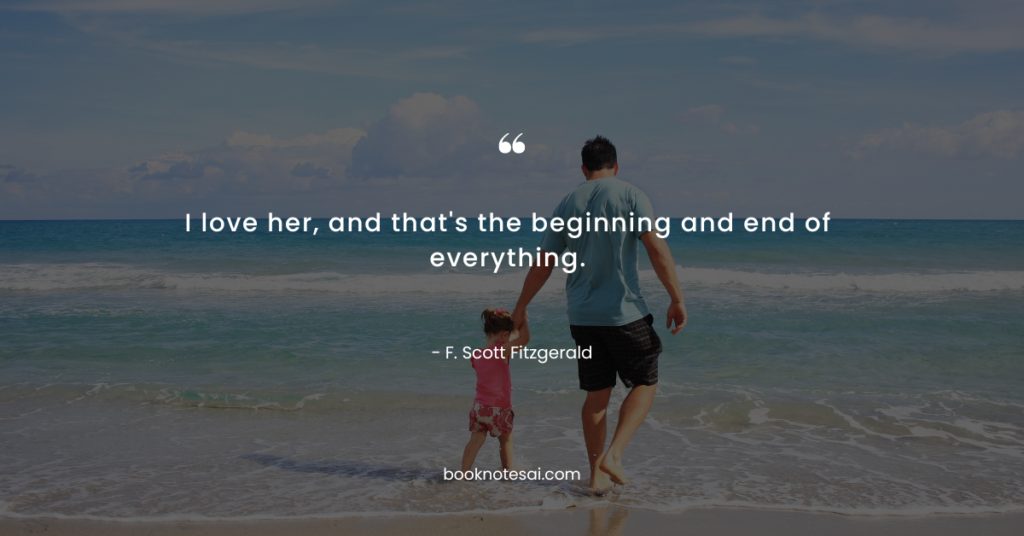Listen To This Post
The Great Gatsby Summary: A Story of Love, Longing, and the American Dream.
“So we beat on, boats against the current, borne back ceaselessly into the past.”
A True Classic that Belongs on Every Bookshelf!

This is a book summary for The Great Gatsby by F. Scott Fitzgerald. The essential information is structured to be straightforward, useful, and valuable, all while helping you save plenty of time.
Introduction: Why this book?
- The Great Gatsby is a timeless classic that explores themes of love, ambition, and the pursuit of the American Dream in the Jazz Age.
- F. Scott Fitzgerald’s masterful storytelling and vivid characters offer readers a glimpse into the excesses and disillusionments of the Roaring Twenties.
The Great Gatsby Summary:
- Set in the summer of 1922, the novel follows the enigmatic Jay Gatsby and his pursuit of the elusive Daisy Buchanan.
- Through lavish parties and extravagant displays of wealth, Gatsby seeks to win back Daisy’s love, only to be confronted by the harsh realities of class and society.
- The narrative unfolds through the eyes of Nick Carraway, a disillusioned narrator who observes the tragic downfall of Gatsby and the world he inhabits.
- Themes of longing, social stratification, and the fleeting nature of the American Dream permeate the novel, leaving readers questioning the true cost of ambition.
- In the end, The Great Gatsby serves as a haunting meditation on the power of love, the allure of wealth, and the limitations of human desire.
💡 5 Big Ideas
- The Illusion of the American Dream: Fitzgerald challenges the notion of the American Dream as attainable for all, illustrating how wealth and status can be fleeting and ultimately unfulfilling.
- The Corruption of Wealth: Through characters like Tom and Daisy Buchanan, the novel exposes the moral decay that often accompanies material success, highlighting the emptiness of a life built on superficiality.
- The Search for Identity: Gatsby’s reinvention of himself underscores the theme of identity and the lengths to which individuals will go to escape their past and create a new persona.
- The Fallibility of Memory: As memories are distorted and manipulated, the novel explores the subjective nature of truth and the unreliability of perception.
- The Tragic Nature of Love: Gatsby’s unrequited love for Daisy and the tragic consequences of his obsession serve as a poignant reminder of love’s capacity to both inspire and destroy.
In summary, The Great Gatsby delves into the complexities of human nature and society, offering profound insights into the human condition.
Powerful Quotes
- “So we beat on, boats against the current, borne back ceaselessly into the past.”
This quote emphasizes the inevitability of the past’s influence on the present, urging us to confront our history. - “I hope she’ll be a fool—that’s the best thing a girl can be in this world, a beautiful little fool.”
This quote highlights Daisy’s resigned acceptance of societal expectations, reflecting the constraints placed upon women during the Jazz Age. - “You can’t repeat the past.”
This quote from Gatsby underscores the futility of trying to recreate past glory, urging us to embrace the present and move forward. - “Gatsby believed in the green light, the orgastic future that year by year recedes before us.”
This quote symbolizes Gatsby’s relentless pursuit of an unattainable dream, serving as a metaphor for the elusive nature of happiness. - “I was within and without, simultaneously enchanted and repelled by the inexhaustible variety of life.”
Nick’s ambivalence towards society reflects the novel’s exploration of the duality of human experience. - “They’re a rotten crowd… You’re worth the whole damn bunch put together.”
Gatsby’s defense of Nick highlights the rarity of genuine friendship amidst a sea of superficiality. - “I love her, and that’s the beginning and end of everything.”
Gatsby’s unwavering devotion to Daisy encapsulates the novel’s exploration of love’s transformative power. - “Can’t repeat the past? Why of course you can!”
Gatsby’s naive optimism underscores the novel’s critique of the illusion of reinvention and the inevitability of fate. - “So we drove on toward death through the cooling twilight.”
This haunting image serves as a reminder of life’s impermanence and the inevitability of mortality. - “He smiled understandingly—much more than understandingly. It was one of those rare smiles with a quality of eternal reassurance in it.”
Nick’s perception of Gatsby’s smile reflects the enigmatic allure of his character, embodying both hope and tragedy.
One Reason To Read This Book:
Immerse yourself in the captivating world of the Jazz Age and experience the timeless themes of love, ambition, and the pursuit of the American Dream.
Who should I recommend The Great Gatsby Summary to?
Whether you’re a literature enthusiast, a history buff, or simply intrigued by tales of love and loss, The Great Gatsby offers something for everyone.
Its exploration of societal themes and human nature makes it a must-read for anyone seeking to delve into the complexities of the human experience.
Recommendations:
- Explore further insights into the Jazz Age with works such as “Tender Is the Night” by F. Scott Fitzgerald and
- “This Side of Paradise” by the same author
This summary serves as a complimentary guide to the reviewed title The Great Gatsby, offering key insights. For a deeper understanding, we encourage you to explore the full book.


